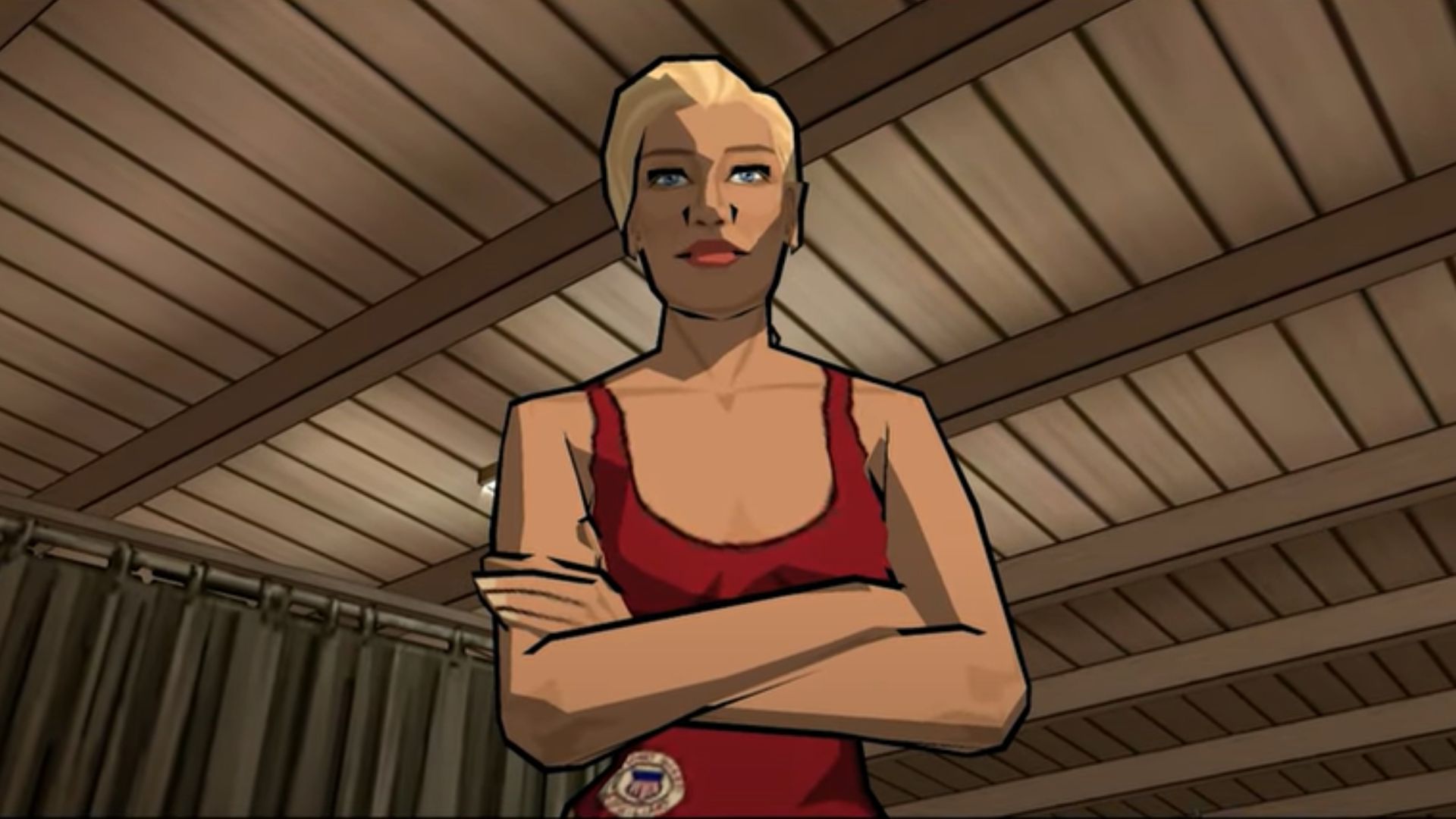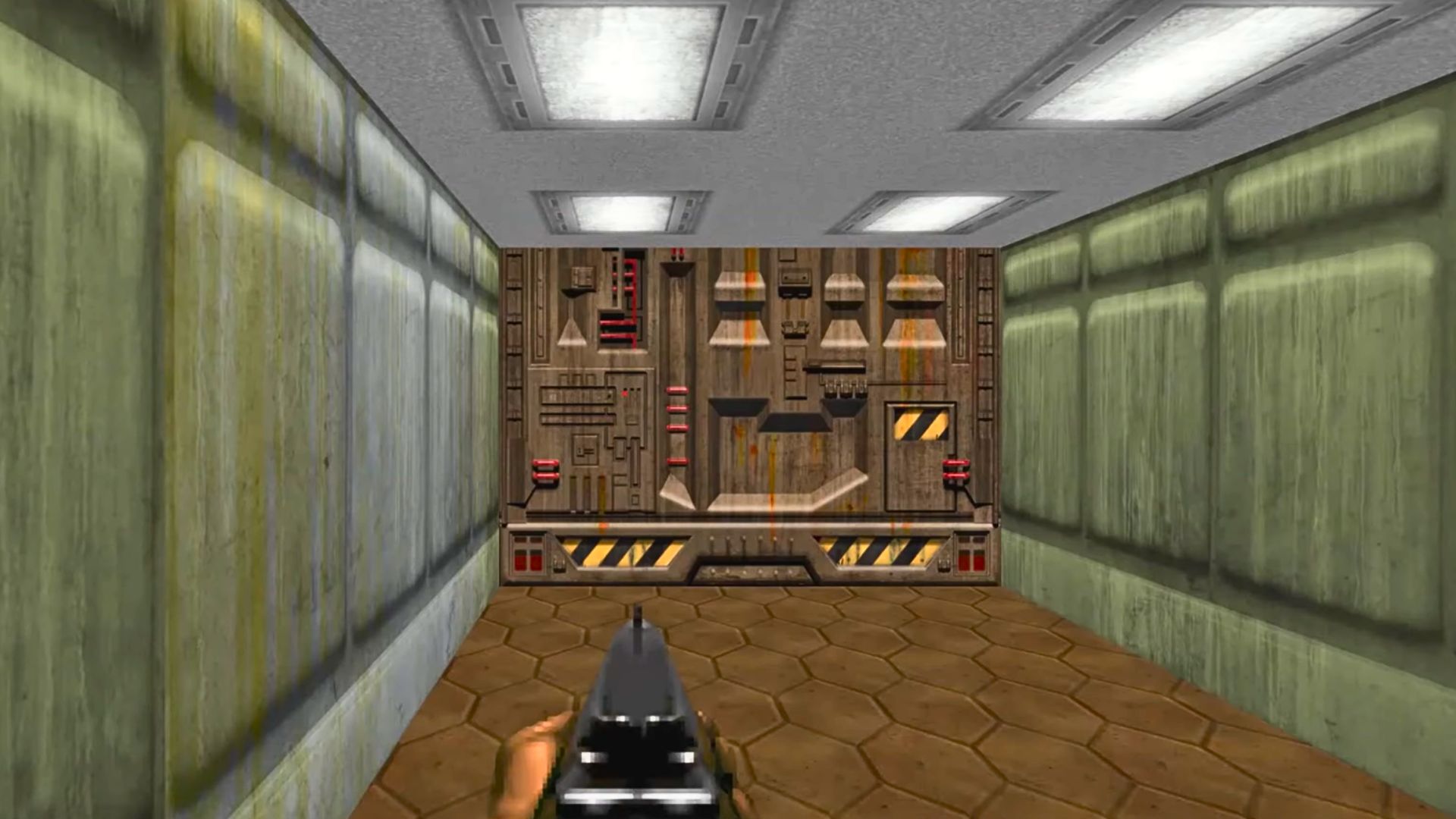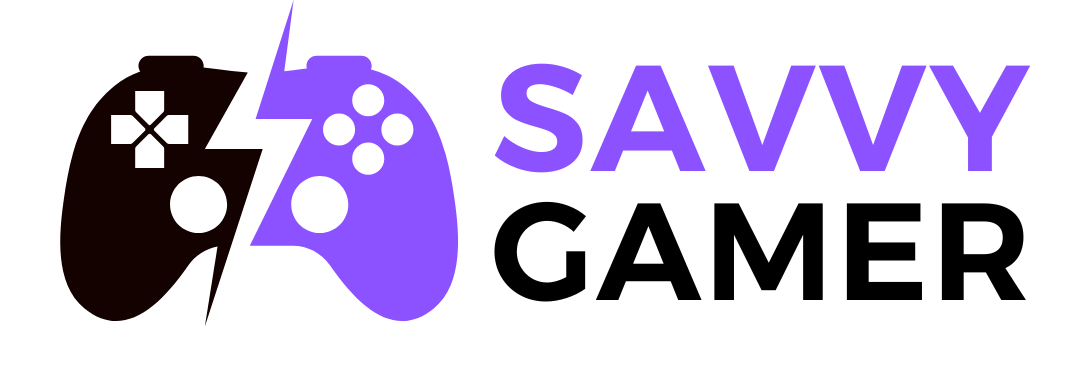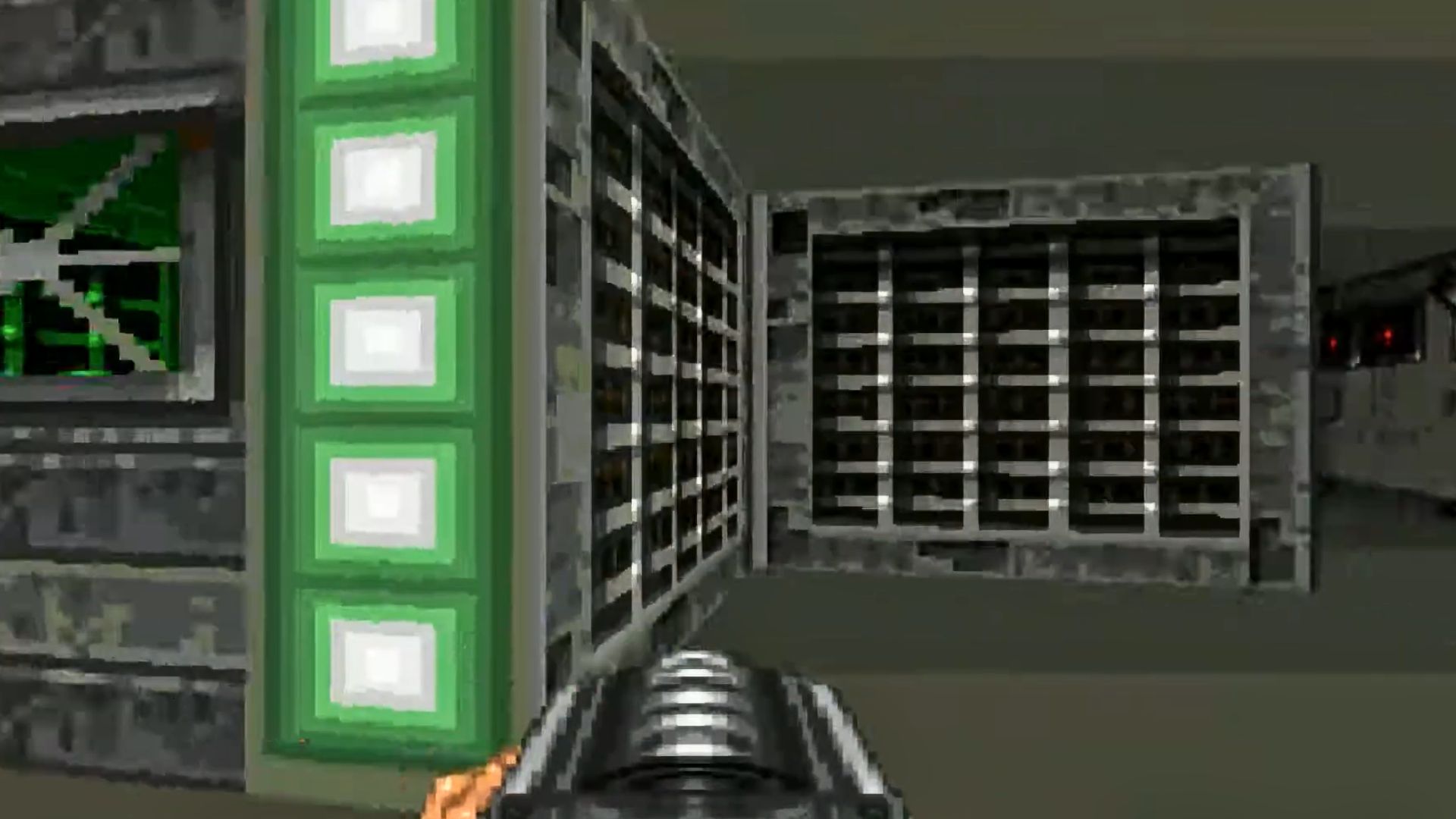The Tired And The Timeless
Some FPS games are like those action movies you loved as a kid. You remember it being epic, but when you rewatch it, things get cringe. Just like that, a pixelated shotgun was enough to blow minds back then. However, only a handful of these classics still slap. Others have just lost their spark. So, let's explore both sides of the FPS world, starting with those that no longer impress.
 13 interesting and cool facts about XIII (2003) by YellowBriefs
13 interesting and cool facts about XIII (2003) by YellowBriefs
1. GoldenEye 007 (1997)
Once a console milestone, GoldenEye 007 suffers from clunky aiming, sluggish movement, and AI that barely reacts. Its split-screen multiplayer lacks the speed and precision of modern shooters. And even in its day, PC titles were already doing it better.
 Getting Goldeneye 007 on Nintendo 64 at LAUNCH August 1997 - My Retro Life by My Retro Life
Getting Goldeneye 007 on Nintendo 64 at LAUNCH August 1997 - My Retro Life by My Retro Life
2. SiN (1998)
Built on a modified Quake II engine, SiN hit shelves plagued by bugs and performance issues. A massive 31 MB patch—considered unwieldy on dial-up—followed soon after. Its launch timing was also unfortunate because Half-Life overshadowed it entirely.
 Unboxing SiN FPS Game PC Gameplay Released 1998 by ShooterGameBox
Unboxing SiN FPS Game PC Gameplay Released 1998 by ShooterGameBox
3. XIII (2003)
Cel-shaded visuals gave XIII a distinct identity. However, that style couldn’t save its clunky combat and uninspired gunplay. Critics weren’t impressed—its Metacritic scores were firmly in “mixed” territory—and poor sales stalled any sequel plans. The 2020 remake only worsened its legacy, ranking among the year’s worst-reviewed games.
 13 interesting and cool facts about XIII (2003) by YellowBriefs
13 interesting and cool facts about XIII (2003) by YellowBriefs
4. Strife (1996)
By blending RPG elements and FPS action, Strife's concept was ahead of its time. But since it was built on the aging Doom engine, it looked outdated on arrival. Compared to smoother, 3D shooters like Quake, its clunky movement and sprite-based visuals feel rough today, even with the 2014 “Veteran Edition.”
 Strife 1996 PC by Hall of First Person Games
Strife 1996 PC by Hall of First Person Games
5. Gloom (1995)
Gloom turned heads in 1995 with gory effects and a heavy metal soundtrack. It was the design that hasn’t stood the test of time. The original allowed only one weapon at a time, and even then, visuals were blocky to the point of distraction.
6. Ominous Horizons: A Paladin’s Calling (2001)
With a $1M budget, Ominous Horizons became the priciest Christian FPS of its time. Built on Genesis3D, it sold about 50,000 copies—but reviews were scathing. Critics slammed its animations and voice work. Developer N'Lightning folded shortly after.
 Ominous Horizons - A Paladin's Calling (2001) PC by Hall of First Person Games
Ominous Horizons - A Paladin's Calling (2001) PC by Hall of First Person Games
7. Perfect Dark (2000)
Perfect Dark followed in GoldenEye’s footsteps—flaws and all. Frame rates were rough, and multiplayer balance was never patched. Though initially praised, its campaign feels simplistic today. The game is frequently lumped into the category of early 3D shooters that aged “like milk.”
 Perfect Dark - Chicago - Stealth (Agent) (2000) [NINTENDO 64] by Dosgamert
Perfect Dark - Chicago - Stealth (Agent) (2000) [NINTENDO 64] by Dosgamert
8. Medal Of Honor (1999)
At launch, Medal of Honor helped shape the WWII shooter genre. Now, it’s defined by scripted missions and predictable AI. Gameplay lacks the variety seen in modern war titles, and its design feels static, especially compared to successors like Call of Duty.
 Was it Good? - Medal of Honor (1999) by Josh Strife Plays
Was it Good? - Medal of Honor (1999) by Josh Strife Plays
9. Team Fortress Classic (1999)
TFC pioneered class-based online FPS design, but many modern gamers find it lacking. Classes feel unbalanced by today's competitive standards. Visuals and interface are dated, with none of the quality-of-life features fans now expect. It’s a historical touchstone that struggles as a modern play experience.
 Team Fortress Classic (1999) by Eighth Paradox
Team Fortress Classic (1999) by Eighth Paradox
10. Daikatana (2000)
Development delays and outdated design doomed Daikatana before it even launched. Released in 2000, it sold just 40,351 copies. Critics cited poor AI and visuals as major flaws. An unofficial patch in 2014–2016 aimed to fix it, but the game’s reputation never recovered.
 Daikatana Unboxing FPS Game PC Gameplay Released 2000 by ShooterGameBox
Daikatana Unboxing FPS Game PC Gameplay Released 2000 by ShooterGameBox
While the above ended up as cautionary tales, the next 10 still stand tall, decades later.
1. Half-Life (1998)
By ditching traditional cutscenes, Half-Life revolutionized storytelling in shooters through seamless in-game sequences. Valve’s decision to avoid “shooting gallery” tropes paid off because over 9 million copies were sold by 2008, and 50+ Game of the Year awards followed.
 Half-Life (1998)(Lets go back to Black Mesa in 2024) #retrogames by RetroGame
Half-Life (1998)(Lets go back to Black Mesa in 2024) #retrogames by RetroGame
2. Marathon (1994)
It’s impressive how well Marathon (1994) has aged. The game introduced free-look mouselook and shield systems, long before these became FPS norms. In-game storytelling through computer terminals added unexpected depth, and thanks to the Aleph One source port, this sci-fi classic still plays beautifully today.
 Marathon (1994) HD Gameplay by MrThejoshmon
Marathon (1994) HD Gameplay by MrThejoshmon
3. Doom (1993)
Despite being sprite-based, Doom still runs smoothly, thanks to tight combat and memorable level layouts. PC Gamer (2022) praised its secret-filled maps and arcade-style gameplay. A 2024 Bethesda update even added cross-platform multiplayer and mod tools, which keep this demon-slaying classic alive.
 Doom (1993) - Longplay [4K 60FPS] by Games Longplay
Doom (1993) - Longplay [4K 60FPS] by Games Longplay
4. Quake III Arena (1999)
This arena shooter is still known for lightning-fast gameplay and pinpoint netcode that continues to influence esports. Frag-heavy mechanics define its purity—no fluff, just skill. Decades later, the game maintains an active competitive scene with custom ladders and tournaments.
 Quake III Arena (1999) - PC Gameplay 4k 2160p / Win 10 by FirstPlays HD
Quake III Arena (1999) - PC Gameplay 4k 2160p / Win 10 by FirstPlays HD
5. System Shock 2 (1999)
Well ahead of its time, System Shock 2 blended RPG depth with horror-driven shooting. It sold just 58,671 copies by April 2000, but its DNA lives on in countless modern titles. GameSpot credits it for pushing the limits of mechanical and narrative integration.
 System Shock 2 (1999) - PC Gameplay 1080p / Win 10 by FirstPlays HD
System Shock 2 (1999) - PC Gameplay 1080p / Win 10 by FirstPlays HD
6. Blood (1997)
Dual-wielded pistols and gruesome traps gave Blood a distinct flavor. Levels featured up to six keys, which made maps more open-ended than its contemporaries. The game’s creative arsenal—including flare guns and voodoo dolls—made every skirmish chaotic and deeply satisfying.
 BLOOD Game Unboxing - PC FPS Gameplay Released 1997 by ShooterGameBox
BLOOD Game Unboxing - PC FPS Gameplay Released 1997 by ShooterGameBox
7. Unreal (1998)
Visuals in Unreal still impress today, especially when paired with its haunting, expansive environments. Bot AI and mutators enhanced its multiplayer, while the Unreal Editor sparked one of gaming’s richest modding communities.
 Unreal (1998) - Part 01 by Methos
Unreal (1998) - Part 01 by Methos
8. Deus Ex (2000)
Missions in Deus Ex rarely play the same way twice. With FPS mechanics and RPG elements, the game introduced adaptive AI and non-linear levels. Add branching narratives to this, and you’ll understand why it’s still referenced as a benchmark for immersive sim gameplay.
 Deus Ex (2000) - PC Gameplay 4k 2160p / Win 10 by FirstPlays HD
Deus Ex (2000) - PC Gameplay 4k 2160p / Win 10 by FirstPlays HD
9. Wolfenstein 3D (1992)
Wolfenstein 3D didn’t just define a genre—it launched it. Though its grid-based movement feels dated, its speed and secrets still offer a compelling run-and-gun rhythm. It laid the foundation for Doom and the FPS explosion that followed.
 Wolfenstein 3D - Episode 1: Escape from Wolfenstein - E1M1 (1992) [MS-DOS] by Dosgamert
Wolfenstein 3D - Episode 1: Escape from Wolfenstein - E1M1 (1992) [MS-DOS] by Dosgamert
10. Red Faction (2001)
Destructible environments set Red Faction apart in 2001 due to its revolutionary Geo-Mod engine. The fact that walls and terrain could be blasted through encouraged creative tactics. This mechanic still feels fresh, and you can see its influence in series like Battlefield.









